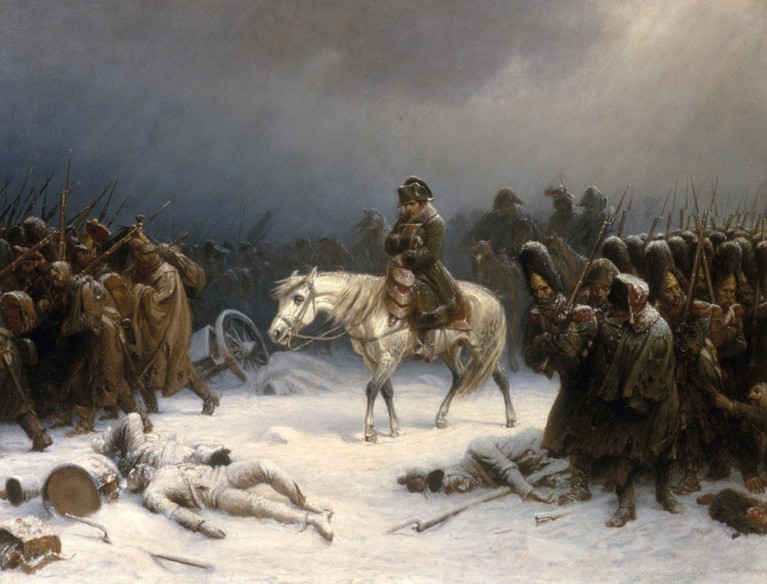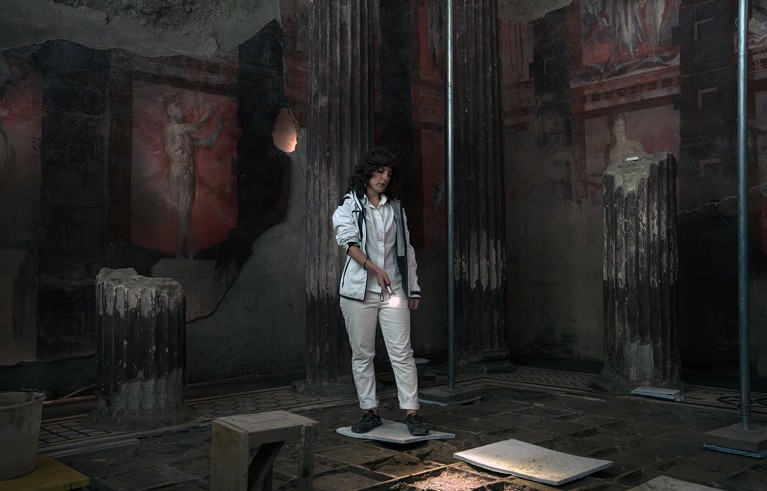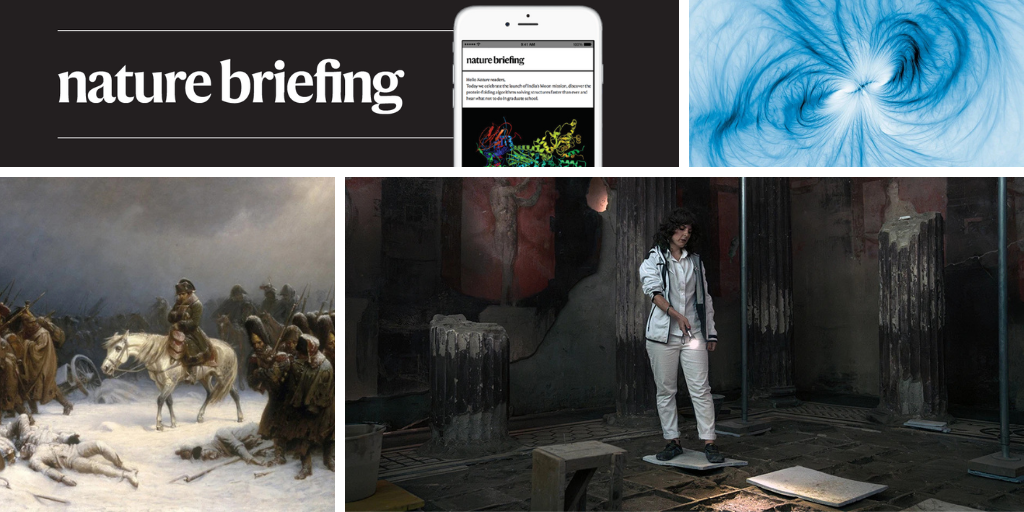You have full access to this article via your institution.
Hello Nature readers, would you like to get this Briefing in your inbox free every day? Sign up here.
Cold, hunger and disease killed some 60% of Napoleon’s 500,000-strong army during its retreat from Moscow in 1812.Credit: R. Barbieri et al./Curr. Biol.
Two unsuspected diseases contributed to the demise of the army led by French emperor Napoleon I in 1812. Previous research using DNA from soldiers’ remains found evidence of infection with Rickettsia prowazekii, which causes typhus, and Bartonella quintana, which causes trench fever — two common illnesses of the time. In a fresh analysis, researchers found no trace of these pathogens. Instead, DNA from soldiers’ teeth showed evidence of infection with Salmonella enterica and Borrelia recurrentis, pathogens that cause paratyphoid and relapsing fever, respectively. The results show that the army’s downfall wasn’t brought about by “one single epidemic”, says palaeogenomicist and study co-author Nicolás Rascovan.
Reference: Current Biology paper
Large language models (LLMs) are 50% more sycophantic than humans, according to a new analysis. Researchers tested whether LLMs such as ChatGPT would flag errors in mathematical problems they were provided with, or assume the statements were correct and hallucinate a proof — answers the team deemed sycophantic. GPT-5 generated sycophantic answers 29% of the time, whilst DeepSeek-V3.1 was sycophantic 70% of the time. This propensity to people-please carries genuine risks when LLMs are used in settings such as health care, say researchers, and such tools should be retrained to be transparent about uncertainty.
Reference: arXiv preprint (not peer reviewed)
Theoretical physicists Richard Howl and Joseph Aziz have put forward a controversial proposal on whether gravity is quantum in nature: gravity could have quantum effects without itself being a quantum theory. Previous work has suggested that if two quantum objects can be ‘entangled’ through their mutual gravitational attraction, then that attraction — and therefore gravity itself — should be of quantum nature. Aziz and Howl say that an interaction of two masses also occurs in fields other than gravitational, such as the electron field, which could generate entanglement with gravity’s indirect involvement.
As part of China’s next five-year plan — a policy blueprint aimed at guiding the country’s economic and social development — the nation aims to achieve greater self-reliance in science and technology and develop innovation-driven industries. The government intends to increase its support for advanced semiconductor technologies, artificial intelligence and basic research, said Yin Heju, the Chinese minister for science and technology, at a press conference. An increase in science-related investments could help to offset some of the impact of the US government’s anticipated budget cuts to research, says sustainable development policy researcher Huang Baorong.
Features & opinion
Space scientists need to forge collaborations with lab-based chemists to better understand the atmosphere of exoplanets, say a group of astronomers and atmospheric scientists. As more data become available, stronger links between researchers adept at experimental measurements, modelling studies and exoplanet observations are needed to correctly interpret such information. A better understanding of exoplanets will allow scientists to explore how planets form and the history of Earth, “but this will happen only if they can decipher the astronomical amount of data now within reach”, the group writes.
Physicists might disagree wildly about how the theory of quantum mechanics describes reality, but they do seem to agree on their favourite science fiction films. Nature asked a number of researchers for their picks and two were consistently highlighted for their depiction of science: 2006’s The Prestige and 2014’s Interstellar, both directed by Christopher Nolan. Nobel-prizewinning physicist Kip Thorne advises Nolan on his films, but not every movie needs a Nobel laureate for accuracy. Spider-Man: Into the Spider-Verse got a nod from physicists for accurately recreating the experimental cavern of a particle accelerator.
Where I work

Ludovica Alesse is an art restorer at the Archaeological Park of Pompeii.Credit: Francesco Pistilli for Nature
Art conservator and restorer Ludovica Alesse works to safeguard ancient Roman frescoes unearthed in the excavations of Pompeii. “Every dig is a race against time: objects that have rested underground for two millennia suddenly face sunlight, air and humidity,” she says. The city “is a global treasure, but also a cemetery. Preserving it means balancing scientific study with respect for the dead”. (Nature | 3 min read)
Today I’ve got bats on my mind. That’s partly because the aisles of my local supermarkets are packed with Halloween sweets. But also thanks to new, and equally spooky, research.
For the first time, researchers have captured footage of a brown rat (Rattus norvegicus) plucking a bat out of the air to eat. Whilst gruesome, I have to admire the rat’s aim — in the depths of a cave at night, it hunts the flying creatures while effectively blind… as a bat.
If you have a favourite spooky snack, or any feedback on this newsletter, please let me know at [email protected].
Thanks for reading,
Jacob Smith, associate editor, Nature Briefing
• Nature Briefing: Careers — insights, advice and award-winning journalism to help you optimize your working life
• Nature Briefing: Microbiology — the most abundant living entities on our planet — microorganisms — and the role they play in health, the environment and food systems
• Nature Briefing: Anthropocene — climate change, biodiversity, sustainability and geoengineering
• Nature Briefing: AI & Robotics — 100% written by humans, of course
• Nature Briefing: Cancer — a weekly newsletter written with cancer researchers in mind
• Nature Briefing: Translational Research — covers biotechnology, drug discovery and pharma


